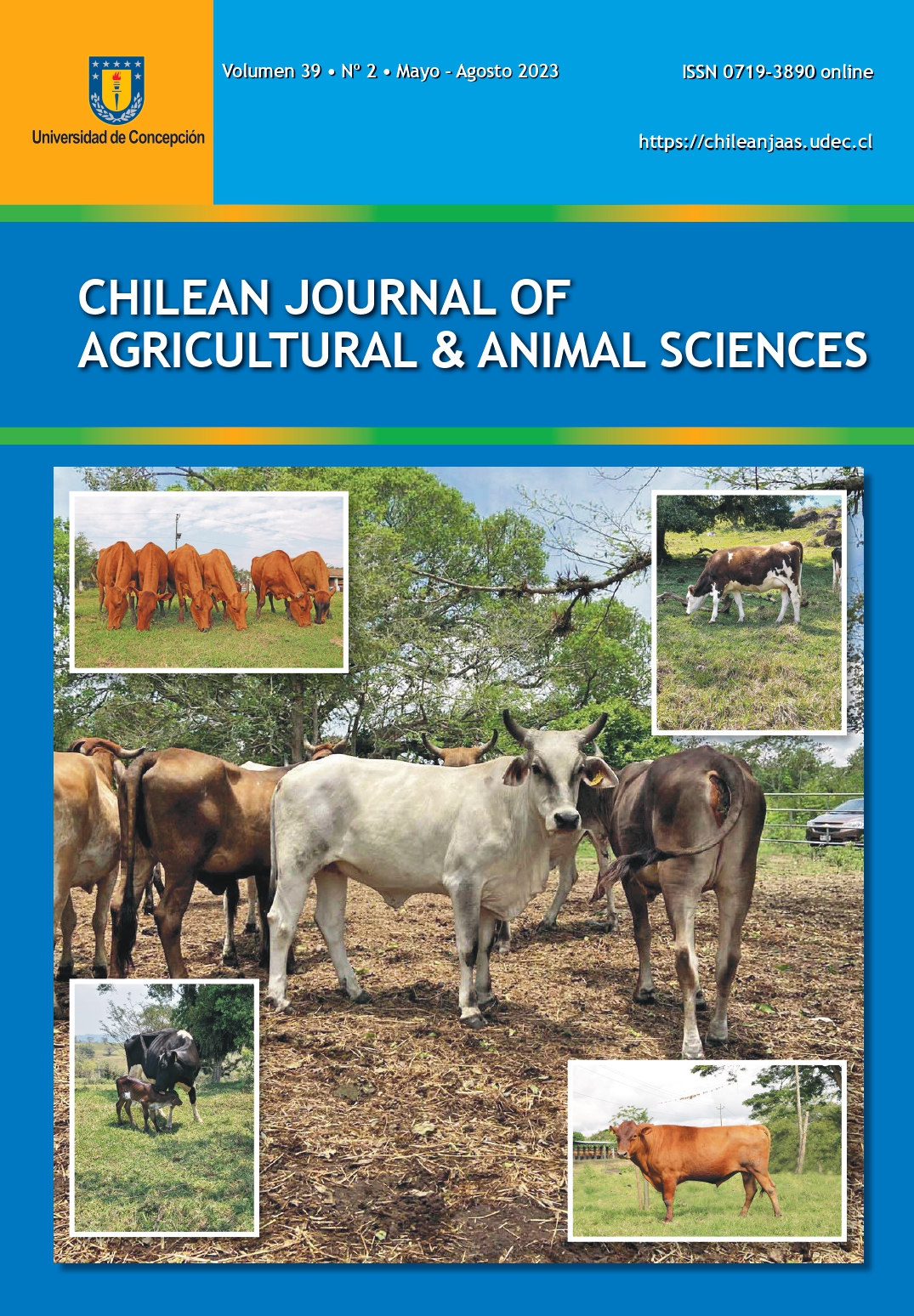BIOLOGICAL RELATIONSHIPS AMONG Fusarium graminearum s.l. ISOLATES FROM DIVERSE HOSTS AND ENVIRONMENTS OF ARGENTINA
DOI:
https://doi.org/10.29393/CHJAA39-19BRAC50019Keywords:
biomarkers, Fusarium graminearum -sensu lato-, geographic origin, molecular markers, plant hostsAbstract
Fusarium graminearum (teleomorph Gibberella zeae) is an important plant pathogen that causes diseases on roots, stems, fruits, and seeds of diverse plant families. The fungus obtains nutrients through saprotrophic and parasitic relationships. Mycotoxins produced by F. graminearum, which can be found in contaminated grains and flours, constitute a threat to human and animal health. The aim of this study was to infer biological relationships among isolates of F. graminearum, obtained from different botanic hosts and locations of the central region of Argentina, by assessment of biodiversity from morphological and molecular markers. F. graminearum (local isolates and a foreign control isolate) established closed morphological and molecular (genetic) relationships beyond the diversity of origin. The identity of the collection was validated as F. graminearum -sensu lato- and it was the predominant specific-clade in the analyzed population. Furthermore, the capacity of
F. graminearum to adapt to diverse plant substrates (Fabaceae, Poaceae, Asteraceae and Rosaceae families) and ecologic environments (between 30 ° and 36 ° south latitude) observed in this study revealed the large plasticity of this fungus in Argentina.
Downloads
Published
How to Cite
Issue
Section

This work is licensed under a Creative Commons Attribution 4.0 International License.







